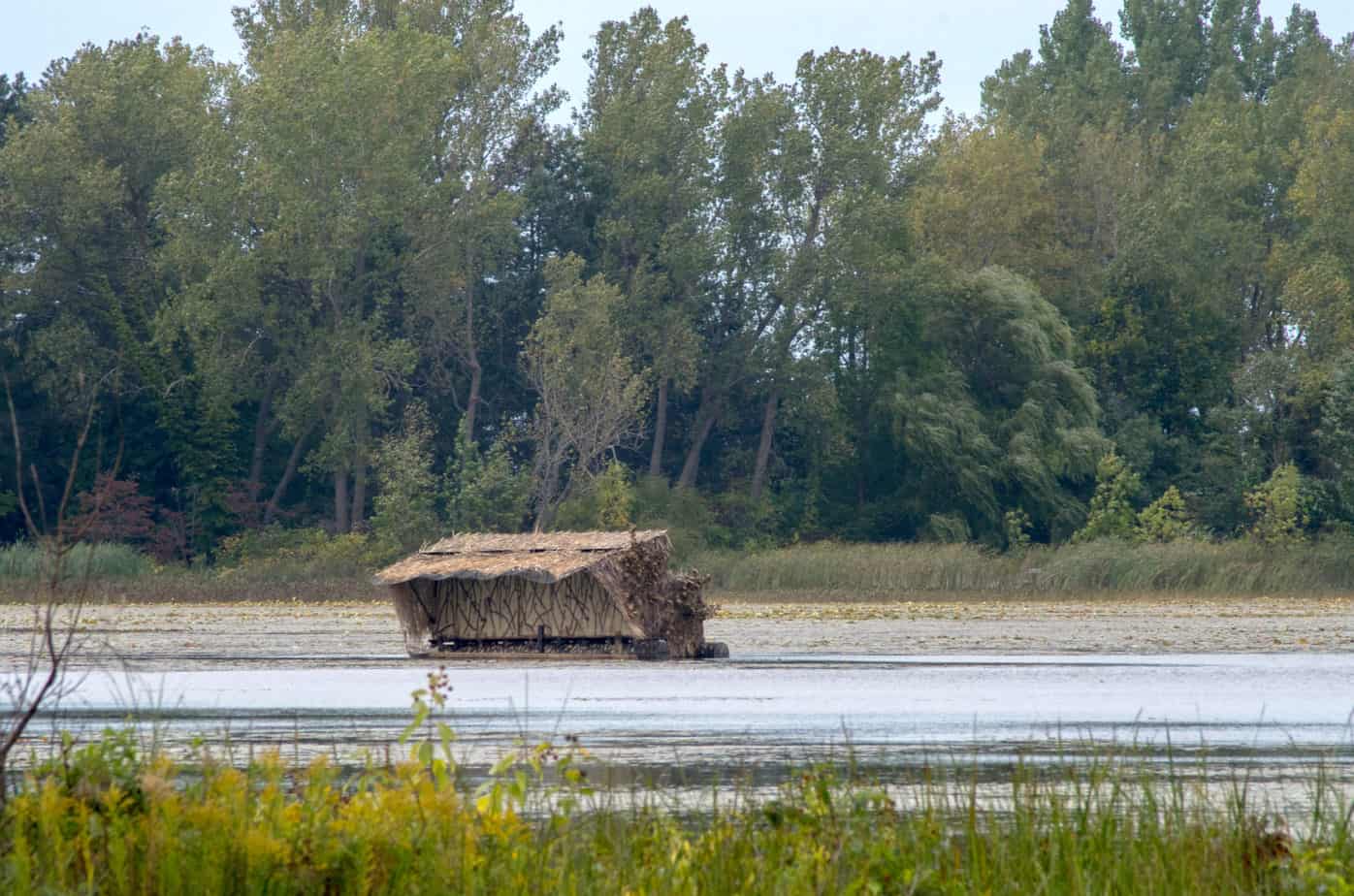Hunting blinds have been around as long as hunting itself. However, modern innovation has given us a plethora of options when it comes to choosing the right blind for our purposes.
Simply put, a hunting blind is any structure that conceals the hunter from the game he is pursuing, allowing him/her the freedom of movement without detection. These blinds can be permanent, freestanding, or even collapsible and portable. They can come in many different varieties and styles, giving hunters a wide range of options when choosing the best blind for their hunt.
Why Blinds?
Hunting might be thought of as a series of trade-offs. A person may hunt without a blind, but he is likely more exposed and vulnerable to detection.
However, this person also has more freedom to move about as he sees fit. When a hunter chooses a blind, they are confined to one single spot, but they are far less likely to be detected. They are also given more freedom of movement as the walls of the blind serve as cover.
Both methods offer advantages and disadvantages, and both sides have their ardent purists who would never even think of hunting another way.
Yet, it is important to understand that not all blind hunting is the same. Evaluation of different types of hunting blinds can help determine which is best suited for the type of game you’re after.
Waterfowl Blinds
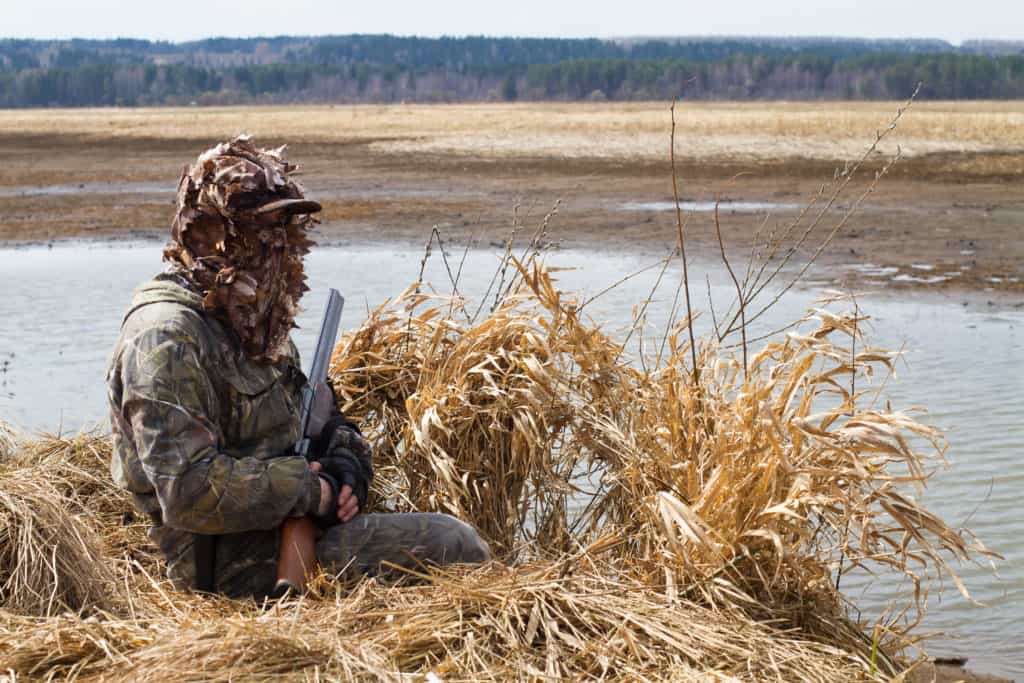
One of the most common types of blinds you find are waterfowl blinds. Wetlands hunters make use of many different types of blinds in their pursuit of ducks and geese.
Depending on their strategy, their blinds may be very simple, consisting of a camouflage wall, or highly complex in that they may contain latched openings and be covered with three-dimensional camouflage or even decoys.
Some even go as far as converting boats and kayaks into functional blinds. Depending on the situation, a waterfowler may make use of large box-like blinds with large windows that are constructed on the banks of a lake or river and are designed to house two or more people.
Often times, there are even perches constructed for retrieving dogs to also be hidden from sight. This allows a hunting party to sit and move comfortably while calling and waiting for ducks to approach their decoys.
The goose hunting approach is usually a bit different. Goose hunters may opt for lay-out blinds that are designed to eliminate the silhouette of hunters in a grain field and are commonly surrounded by a decoy spread.
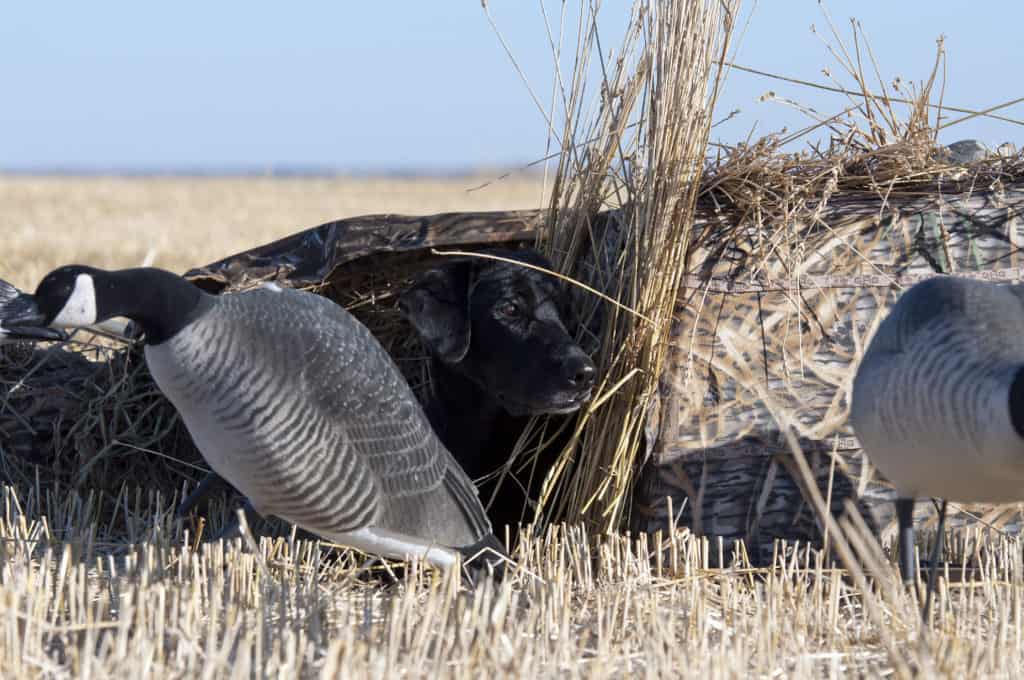
This may be true for both snow geese and Canada geese. In this situation, hunters lay out in a grain field underneath the blind while utilizing goose calls to draw flocks of geese in to their vicinity.
Once these flocks of geese are close enough to present a clean and clear shot, the hunters can emerge from the blind to harvest the geese. Just as with duck blinds, dogs are often given their own blinds to keep them from being detected.
These blinds are often more neutral-toned in color to match the more muted colors of grain fields, but are sometimes not as easily portable. For this reason, many hunters arrive the night before to lay out a decoy spread so that it is ready to go the next morning.
Pop-Up Blinds
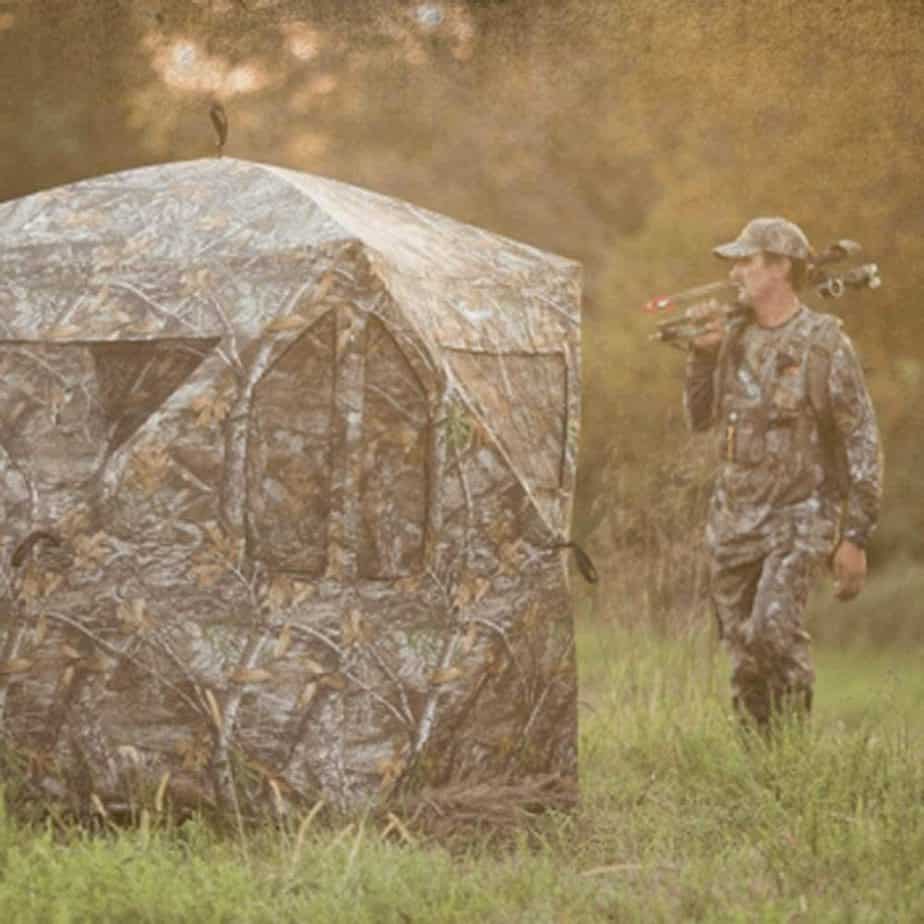
Another style of blind that has been growing in popularity in recent years is the pop-up blind. Relatively inexpensive, this blind in some ways resembles a camping tent, and like a tent is collapsible and portable.
Generally cube-shaped or dome-shaped, these blinds can generally comfortably fit two people and are usually outfitted to be able to contain chairs.
Most times, these types of blinds have windows on every side which are able to be unzipped to become bigger or smaller based upon the preference of the hunter.
Modern pop-up tents are also usually made of a plastic or nylon material and are usually in some form of camo patterns such as Realtree or Mossy Oak.
These types of blinds are popular with both spring turkey hunting and with deer hunting. Their lightweight nature and modern camo patterns make them an excellent choice for the hunter who prefers to remain stationary.
These give deer and turkey hunters the added advantage of being able to stay out of the elements during storms or extreme cold or snow. It allows the hunter to keep himself, his firearm, and his calls dry and functional so that the hunt can continue productively.
Portable Blinds
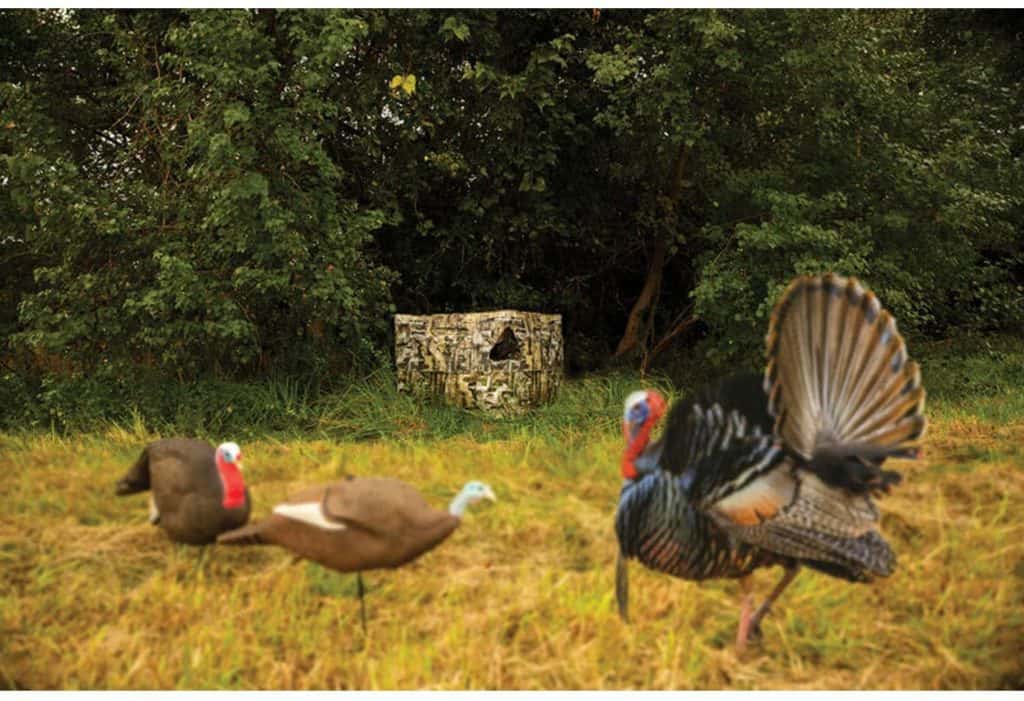
This style of blind has also developed a solo-style model, which seats only one person and has a built-in chair. These are great for hunters who want to keep a blind handy in case of unforeseen rain or wind.
Sometimes this alone is what separates a miserable hunt from an enjoyable outdoor experience. These blinds are great for the hunter who wants to be ready for every scenario.
Most of these blinds are very lightweight and are usually able to be carried in a backpack style so that a hunter can simply always bring it as a part of his essential gear.
Other types of portable blinds include reflective blinds, which reflect the forest floor on which they are set, giving them a highly realistic camo pattern.
These blinds are usually tri-folded and can be stood up in a way that somewhat resembles an open book with the hunter able to crouch down behind.
Moreover, in recent years turkey blinds have been developed that are created to resemble a tome in full-strut. These blinds are constructed much like an umbrella that unfolds at the push of a button.
The hunter can then stalk a spotted turkey with the blind extended out in front of him, resembling the arrival of a challenging tom. Once the hunter has gotten within shooting range, the blind can be dropped and the shot can be attempted.
Permanent Blinds
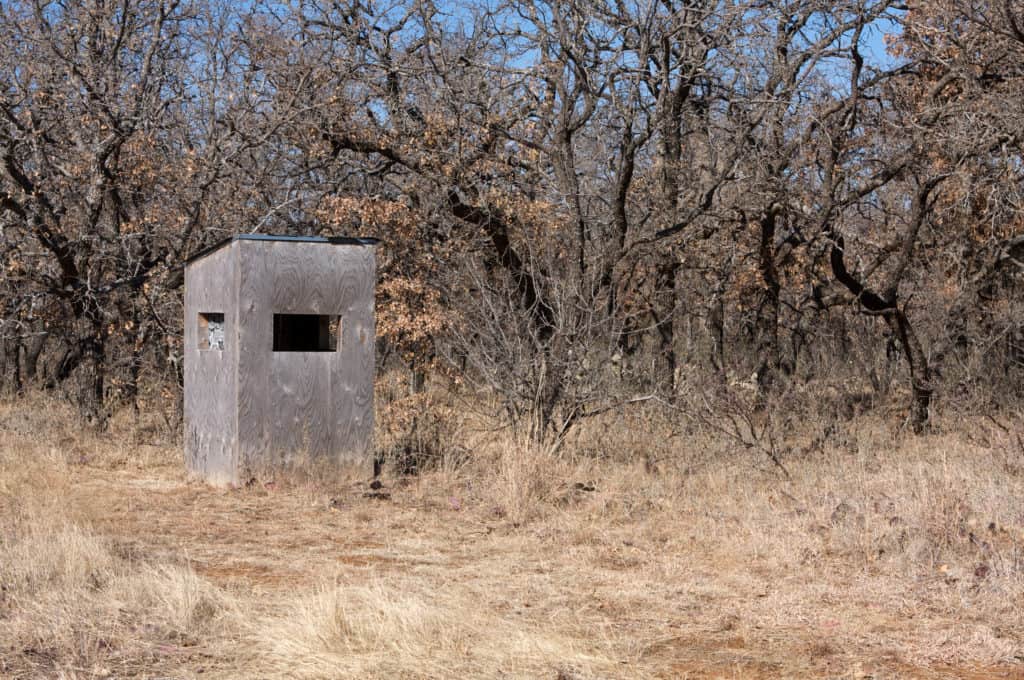
Another style of blind is the permanent blind. These are the types of structures that are built to last more than a single season and are usually wooden.
Often, these are built for deer hunters who want to spend an ample amount of time in their blinds, and so want to have an abode that is more comfortable and built with more structural integrity than a mere pop-up blind would allow.
These blinds usually resemble something like a small tool shed or park ranger post. It is not uncommon for them to be raised up on pillars to help the hunter’s vantage point and assist them in spotting and tracking their game.
Permanent blinds can be especially useful to those who are hunting with a rifle, as it allows for generally a more solid rest for the gun when taking aim.
Conclusion
Like everything else in the hunting world, a blind is merely another tool in the hunter’s bag. The point is not whether it is better to hunt with or without a blind, but that whichever way you choose, you do so with integrity and sportsmanship.
There is certainly more than one way to harvest a turkey or connect in bow season. The blind offers hunters a unique, and dare I say quite cozy, experience in the great outdoors.

